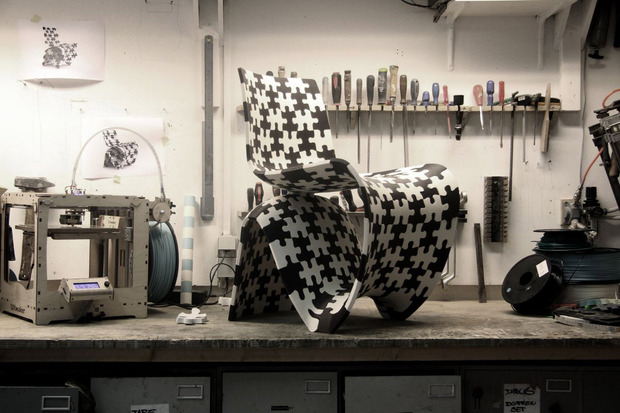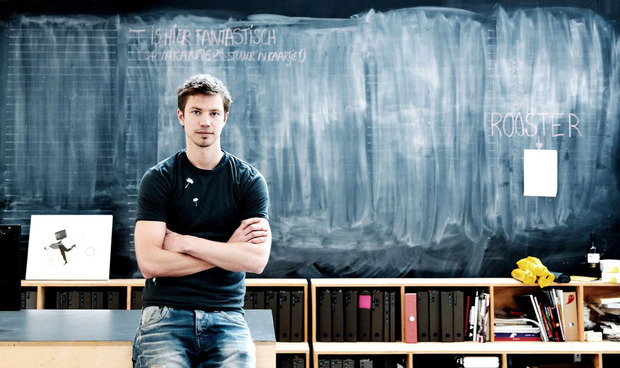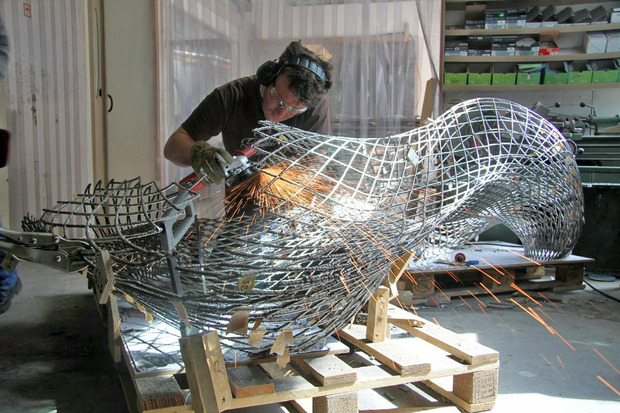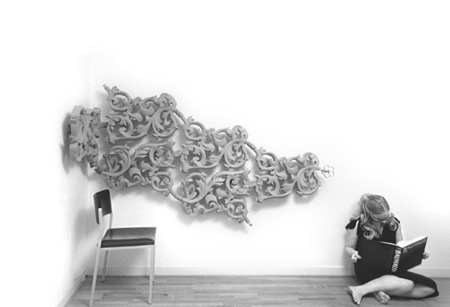Joris Laarman Lab: Bits and Crafts
Digitally fabricated and designed furniture that blends the experimental with the practical


There’s a downpour falling in Chelsea—Manhattan’s west side neighborhood where galleries outnumber bodegas—a ceaseless opening of the skies, the kind that New Yorkers refuse to adapt to. Outside the Friedman Benda gallery, Amsterdam-based Joris Laarman‘s precision-built, technologically produced series of furniture is being carefully transported indoors. Many of the intricate pieces were printed and assembled in Laarman’s studio (or perhaps more accurately, lab) just weeks before being disassembled and shipped across the Atlantic. Laarman’s operation requires a staff of CAD specialists, sculptors, designers, skilled handlers and engineers that has recently swelled to 40 for his latest offering “Bits and Crafts,” which acts as a testament to the possibility and capability of digitization in design and fabrication, as well as the balance of the human hand with technology in craftsmanship.

“When people think of digital fabrication, they usually think of 3D printing,” Laarman says. “We were all a bit bored with all the tiny keychain-sized things people were making so we really tried to push it to a higher level by using real materials like wood and metals.” And thus the Maker Chair was born. Each chair is composed of dozens of pieces that are either 3D-printed or computer numerical control (CNC) milled, depending on the material. “By dividing designs into small building blocks that are assemble-able into a design—like a three dimensional puzzle—you can make really organic-looking shapes out of solid materials.” The black and white Maker Chair is composed of 77 pieces and printed on ABS plastic—the same stuff used in Legos. It’s incredibly strong, snaps together easily and is inexpensive. Laarman plans to release the plans for the Maker Chair online, so it can easily be replicated at home for about $30 in materials. “It’s evolving into many things, the future of digital fabrication is the scaling up of the whole process,” Laarman says.
This scaling up is seen most overtly in Laarman’s Spirographic series, using the MX3D machine—the first metal 3D printer of its kind in the world, where the mixing of composites and welding hardens the material as it prints, meaning there is no support structure required. “You can just draw in midair,” Laarman says. The lines for the Dragon bench are derived from algorithms and a non-repetitive parametric module, a further instance of Laarman’s commitment to blurring the line between science, design and art. In terms of strength, Laarman says the stainless steel structures printed by MX3D could have applications on an architectural scale and further industrial design uses.

Despite Laarman’s insistence on technology and digital fabrication, his outlook on the future of design is one in which the human hand still plays an integral role. “Everyone who says 3D-printing is just pressing a button doesn’t really know how how it works,” he says, “It’s very hands-on and very elaborate.” The technology—especially in regards to woodworking—actually fosters a local craft economy more than existing industrial systems of production; where Laarman sees a network of woodworkers crafting designs pulled from the Cloud. “That’s not really the point [of digital fabrication]—to have it not work without humans involved. It’s more to have it customizable and to be able to produce things locally without all of the shipping of the industrial system,” he adds.

Regardless of one’s opinion on the role 3D printing will play in the future of design, and indeed everyday life, Laarman and his team’s work is inspiring. His cerebral approach—melding science, engineering, design and plain curiosity—yields results that anyone concerned with the direction of design and the current state of its relationship with technology would be wise to pay close attention to.
“Bits and Crafts,” featuring the Maker chairs, Dragon bench and additional cutting-edge works opens tonight, 1 May 2014, at Friedman Benda in NYC and runs though 14 June.
Portrait courtesy of Angus Shamal, all other images courtesy of Joris Laarman Lab












